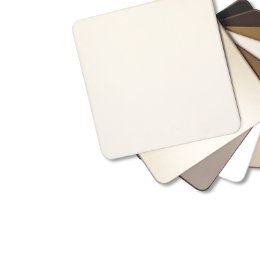Understanding the Role of Fabrication in Cladding Applications
For designers looking to build with metal composite materials (MCM), it may be surprising to hear that while ALPOLIC manufactures the quality look and innovative material that is the face of buildings around the world, it is does not manufacture the cladding system. Rather, skilled fabrication teams use ALPOLIC to create the complex forms and assemblies that make building exteriors both safe and beautiful. Chad Patterson was once a part of the fabrication world. Now, he uses his extensive background in project management, drafting, estimating, and installation to help educate designers and get them in touch with quality fabricators in their region as ALPOLIC’s senior sales development representative.
Sustainable composite cladding is just one component of the wall assembly described in a project’s specification — the framework that details scope, materials, and methods required. “Architects will specify a list of products for a given project. For a façade featuring ALPOLIC, that might mean the finish criteria or attachment systems,” describes Chad. The specification may require a certain paint system, warranty coverage, or fire testing standard. General contractors receive the specs, then get subcontractors to bid on the work.

Reconciling Design With Constraints
Chad explains that often the first step for fabricators considering cladding applications is interpreting the architect’s drawings. “These give fabricators a rough idea of what the architect wants the end product to look like. From there, the fabrication team would draw it to be more specific to the products offered. So, it would be the fabricator’s details, attachment methods.” Chad describes project management as reconciling the design with the build constraints while making sure the project stays on schedule and within budget. “It’s a matter of trying to get it tailored to fit. Fabricators know what the job needs and what the client wants.”
After submitting drawings to the general contractor for approval, the actual fabrication process could begin. Routed and formed into panels, the materials are shipped out to the job site where the erection team can install. For 15 years, Chad has been proving ALPOLIC is the right material for the job for projects of all sizes. “I always chose ALPOLIC for a couple of reasons. One was the service I received from the support staff: customer service, the sales team, technical, marketing. It always felt like they went above and beyond to take care of me as a fabricator. Then the product that they offered and the warranty -- which spoke about the product and how they stood behind it.”

These experiences made joining the ALPOLIC team an easy one. “It was like coming home.”
Chad Patterson is the senior representative of sales development for ALPOLIC in the south central US region. Following a degree in Engineering Administration, Chad worked his way up in the field from architectural drafting and CAD work to project management and sales for custom builders and fabricators. Now he leverages his firsthand experience in cladding applications to support ALPOLIC customers.






